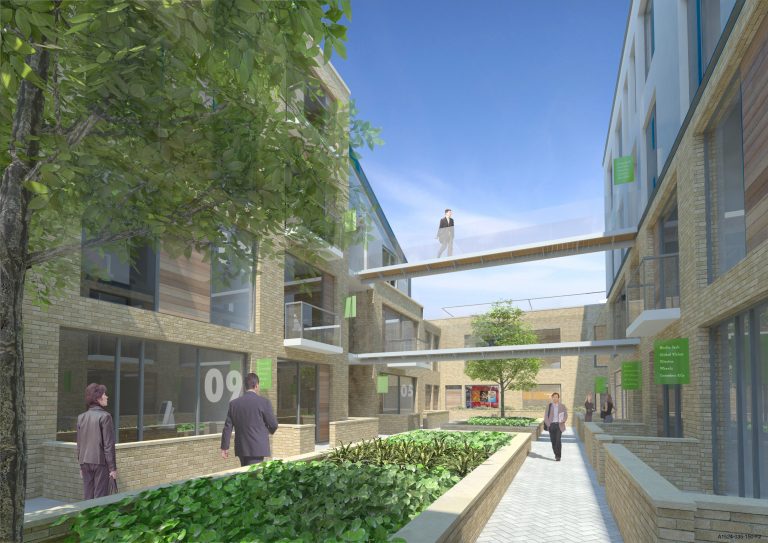Green light for flexible commercial scheme in Clapham
Planning consent has been granted for a £6 million commercial scheme in Clapham, South London, designed by Assael Architecture for Grainger plc.
The development at 25-33 Macaulay Road comprises a four-storey building providing up to 32 small commercial studios with the option of being converted to residential use, in order to respond to market conditions, without the need for an additional planning permission.

The scheme takes inspiration from other industrial-related schemes and is a component of Assael’s wider design for the site which will also deliver 96 private and affordable homes. The result is a design that mirrors the construction, orientation and detailing of adjacent finger-like buildings, which run east to west. This is complimented by an internal courtyard, featuring large areas of glass with modern fenestration. The building form provides multiple, vertical circulation cores and access to all units via external bridges floating across the courtyard spaces, maximising flexibility and contributing to the character of the courtyard.
The scheme will achieve a high level of sustainability. Carbon emissions will be reduced by between 11.1% and 13.3% through passive design and energy efficiency measures. These include lighting and heating controls, natural ventilation, passive solar design and roof-mounted photovoltaic cells.
The scheme also promotes more sustainable transport choices. Placing the new facilities close to public transport nodes reduces the need to travel by car and the building does not incorporate any dedicated car parking for employees.
Russell Pedley, director at Assael Architecture, said: “The scheme responds to property market conditions because it is designed to be flexible, as well as highly sustainable. Hence while the building will be brought to the market as a commercial scheme containing commercial units, after an agreed period of marketing, if it is deemed that some units would be more suitable as residential, they can be converted easily without new planning consent. This approach not only kick starts the development which will deliver nearly 100 new homes, but also reduces risk, making the project more attractive to funders and helping to safeguard the developer’s investment.
“Our design achieves a balance, delivering studios attractive to the cultural industries, yet capable of conversion to residential ‘loft style’ apartments in response to market demand. This in a robust and flexible building form able to deal with the inherent technical challenges and contribute to the character of the conservation area,” he added.